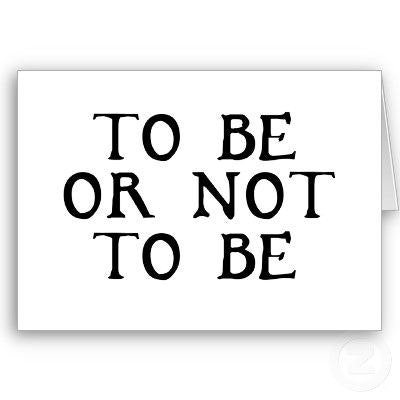Return to Office
Photography by Scott Firestone.
As companies and individuals navigate a return to the office here are some considerations one should keep in mind.
Photography by Scott Firestone.
The Future of Work will be increasingly distributed and unbundled.
There is no going back to December 2019 only a move ahead into 2022 and beyond.
The Covid-19 lock-downs underlined that the way many of us were working two years ago was not significantly different than the way we operated in 1980, despite a plethora of changes from advanced computing to new communication technologies to a huge increase of women in the workplace.
After two years of working differently with little if any decline in productivity the scales have fallen off our eyes and every individual is re-thinking work in several ways.
The role of work in our lives: The past two years have underlined the fragility of life and given people the opportunity to interrogate the meaning of work in their lives and the nature of how they do it. Inertia had led us to continue to do things that made very little sense but the shock of displacement from Covid has made many re-consider and re-think.
Where we work: Significant portions of a company’s employee base live in a location different than they did two years ago. Many have found their new habitat more conducive to their lifestyles whether it is for economic or family or other reasons.
When we work: The 9AM to 5PM or the 8AM to 8PM need for presence under the watchful eye of management has been replaced by many different ways of getting work done where a person has integrated work and non-work agendas in a way that suits them.
Who we work for: Up to a quarter of “full-time” employees have in the past two years developed a side gig for reasons of interest, passion, and economic need. They have unbundled their income stream from a single employer.
Web 3.0 and new technologies: A plethora of new technologies are increasingly going to enable a much more decentralized, open and composable future. Already companies like Meta are asking their employees to “live in the future” expecting half of the work force to be distributed across the world.
Our thoughts about work today are like Champagne corks. They have swelled with the new possibilities and will no longer fit into 2019 vintage.
Photography by Scott Firestone.
There are many benefits to in-person interaction but most of them do not require sitting in an office all day or for five days a week.
The three key benefits that in-person interaction bring are learning, relationship building and problem solving/creative idea generation.
Learning: There is a belief that some flavors of learning uniquely come from watching others in action or being mentored by bosses in an apprentice/guild like model. This is probably true for many industries and particularly for people early in their career or new to a company.
Relationship/Network Building: While relationships can be built online (for example dating apps), the reality is that some in-person meetings can help deepen and strengthen relationships. The best relationships combine the physical and the virtual, so some in-person interaction makes sense for many.
Problem Solving/Creative Idea Generation: If innovation is about fresh insightful connections, then the give and take between people can be a real asset. Whether it be the unexpected interaction between two colleagues or the in person back and forth of a brainstorming, these are benefits that result from being together.
But we should recognize that for creative brainstorming many people would leave the office to go off-site, building relationships and networks often took place at restaurants, bars, coffee shops and events and learning occurred at conferences and specialized training programs.
The key is that many of these occur out of the office, take up less than a third to half of a working week and need to be scheduled and programmed versus just happening by chance.
Photography by Scott Firestone.
Unbundled and Distributed work enable significant competitive advantage to companies that embrace them.
Imagine if you were a company starting today and were asked to choose between Door A and Door B.
Door A: You are limited to accessing talent who can afford to live near your headquarters or must work full time. This talent only works for you and is reliant on their entire income on you which could make them loyal but also potentially less likely to challenge the status quo since they may have limited optionality.
This door gives you great control over your people and a return to a simpler way to manage and organize.
Door B: You can access talent from anywhere in the world and they can work for you half, three quarters or full time giving them and you the ability for variability in employee cost and gives them the flexibility to fit their work into their life versus fitting their life into work.
This door gives you the ability to hire diverse talent, attract people from everywhere in the world while giving you flexibility on cost management but increases complexity and requires enhanced management styles.
For businesses needing to attract white-collar and knowledge workers asking people to return to the office for three or four or five days a week (versus coming together for specific training, creative or relationship building events) is in effect choosing Door A and will likely leave these firms at significant competitive disadvantage to companies who choose Door B and find a way through its initial messiness and complexity.
Photography by Scott Firestone.
In-Person interaction should be the focus versus returning to the office.
Six simple steps for every company to consider:
Future forward: Recognize that the future does not fit in the containers of the past and a four- or five-day week in the office is a container of the past. Communicate that your plans are about moving ahead to build on what has been learned in the past two years and not to return to some nostalgic halcyon days of yore.
Celebrate benefits of the past two years: Call out the significant benefits from flexibility and diversity to more that the world of unbundled and distributed work has enabled.
Re-enforce the importance of in-person: Explain why in-person interaction (supplementing just virtual connections) are important to your ability to compete, build talent, enhance relationships, and culture and generate creative solutions and solve problems.
Focus on the synergy: Emphasize that the company is trying to integrate the power of in-person with the flexibility of virtual work to build a solution better than either one separately and it will a) require some flexibility per individual and b) some iteration and constant learning.
Schedule events versus just days in the office: Program events from training to brainstorming to team get togethers both in the office and outside the office. Do not ask people to return to the office but re-turn to specific programs. An individual is not being asked to come back to the office which many do not find productive for “heads down” work of reading, creating documents or presentations but for “heads together” or some “heads up” work of training, relationship building and problem solving. If you have folks returning two days a week, make sure there is something programmed around these events those two days versus just having people sit around.
Freedom within a framework: Allow for some freedom within the framework in how many days someone returns to working together. Some folks may want to be together more than the prescribed two days or require more time together if they are going through orientation and training while others may need the flexibility initially of one or two days a month.
These steps communicate that you are looking forward, trying to balance the best of both worlds, and reflecting that talent looks for freedom, to fit their work into their life story and want growth (skills, personal development, career opportunities, income).
This approach is likely to attract and retain talent while ensuring a company’s culture and competitiveness.
It will not however work for everyone and a company at some stage may have to part with talented individuals who refuse to be flexible in their ways rejecting all in person work or working to undermine the new model. While losing talent especially stars is not ideal, a company is more than any one or two or three individuals and a certain framework is essential for fairness and cultural cohesiveness.
The real challenge will be on leaders and managers who will now need to truly up their skills in enabling, inspiring and motivating talent.
Greatness.
Photography by Antony Spencer.
Greatness is everywhere if we care to look and find people to admire.
These people are not just the powerful and famous.
They can be teachers, nurses, craftspeople, social workers, and story tellers.
Observing and reading about greatness reveals a common pattern.
The great have been forged in a furnace of challenges and formed in a foundry of experiences.
Their challenge, and experiences have led many to some foundational beliefs, core fundamentals they leverage and first principles they turn to.
They have an ability to combine great focus with flexibility in ways that make them a force.
Photography by Antony Spencer.
Forged and formed in the furnace of time and experiences.
Even if one is lucky to born with prodigious skills it takes time to hone one’s expertise where it can have a powerful impact.
Only with the feedback and continuous iteration that comes with experiences does one learn to connect dots, see patterns, and identify processes that work.
Malcolm Gladwell proposed that it takes 10,000 hours of practice to build expertise.
Many people who are seen as “overnight successes” have spent thousands of nights learning.
Time is its own unique furnace but so are moments of acute challenge.
Recently many leaders whether they be CEO’s, schoolteachers or nurses were forced into the furnace of Covid-19 and its challenges. Many rose to the occasion and in midst of this great distress their greatness was formed.
Most recently millions of Ukrainians and their leader have revealed their greatness.
Under pressure people who you thought might be coal turn into a diamond.
The pressure twists and transforms them into new shapes.
The furnace of challenges and the foundry of experiences is what sculpts and chisels greatness.
Photography by Antony Spencer.
Foundational Beliefs. Fundamentals. First Principles.
Great practitioners often have a framework of some fundamental and foundational beliefs and first principals.
A way of doing or filtering, a check list, a smell test, a feeling of prescience or a sixth sense.
Some things that they have come to believe as absolutes, such as a belief reality must be faced, facts are stubborn things, and one cannot look away from the data. There may be first principals on how to deal with and inspire people or how to problem solve or best ways to integrate different companies and cultures.
There is a “way” or “ways” that they use to frame and filter what they see.
This fundamental understanding allows them to see patterns that many others cannot just like great chess players can sense an underlying design to the game or great investigators combine what seems to be disparate dots to identify patterns.
Photography by Antony Spencer.
Focus and Flexibility combining to create a Force.
If you see Monet’s water lilies or listen to Beethoven’s Late Quartets, you will find utter simplicity and focus on some key elements fused with a flexibility of craft and style that combine to have an impact and force.
The best in a field can speak and explain with simplicity by focusing on what matters and leaving out the rest while customizing (flexibility) the communication to ensure the outcome.
The best nurses or doctors know exactly what to focus on when treating a patient but are flexible in how they apply their craft to ensure the best medical result.
It is an odd combination of The Mandalorian, Lawrence of Arabia and Yoda.
The focus is on recognizing there “is a way”, the flexibility is in understanding that when applying this to a situation “nothing is written” and by combining these two the “force is with them”.
Photography by Antony Spencer.
Learning from the great and unleashing our own greatness.
Look around and most people you see are great at something or the other. We all have superpowers and instead of focusing on our weaknesses we may want to hone in on our strengths and celebrate and leverage the strength of others.
First, we must realize that time, experience, and circumstances are necessary to get to a level of greatness. It cannot be hurried or willed into being. Seasoning matters.
Second, we should interrogate ourselves to better understand what fundamental skills, foundational beliefs and first principals drive us. Better understanding these allow us to confirm their validity and if so leverage them. We should ask those that we admire what they leverage and filter to make decisions.
Third, we should both watch and learn from ourselves and others to hone our ability on how to keeping our eye on what matters and learn that less is often more.
Finally, be open to new data that allows us to flex and iterate our way to remain relevant.
Next time observe those around you and yourself.
The potential for greatness is everywhere.
Find something, somebody, or some ways to admire.
New Narratives
The human tragedy on the ground in Ukraine is hard to fathom or look at and no amount of imagination can match the pain and the destruction on the ground.
It is one of the reasons that Putin has for the first time in his twenty year reign shut down everything that is not under his control (including social media and every small independent newspaper, broadcast or online service) and has promised 3 year to 15 year sentences for even carrying a placard with the word “War” on it ( because in Orwellian speak it is “a special military operation” to liberate and “de-nazify” a country).
But the world of storytelling and media has changed. Not just in the past decade but very dramatically in the last two or three years and this changing narrative landscape plus a new generation of narrators and voices combined with new media behaviors is increasingly difficult to control from top down.
This post samples these new narratives through the lens of the Ukraine war…
New Narrators/New Narrative Publications.
Today arguably among the best writers on the war if not the best writer is Julia Ioffe from a new journalist owned and controlled publication called PUCK which believes “ in this new media age, the creator is the heart of the business equation”
Julia is deeply sourced, rational and tries to get to the truth even if we do not like to hear what she reports.
In this piece which includes an excellent interview she notes that half to two-thirds of Russians support the Ukraine war. That most Russians have not yet felt the big impact of the sanctions since it is really a tiny fraction of the population who has been first hurt (the upper middle class and rich who own the assets and use rouble/dollar accounts that have plummeted). The impact of the sanctions will begin to impact the country shortly with inflation and some initial shortages ( the closing down and discontinuing of the major global brands in the country will also prompt some questioning and therefore is likely to be very impactful).
However, there is a vulnerability for Putin which is that Russians under 35 who because they did not grow up during the Soviet era and most importantly because they do not get their news from newspapers and tv are anti-war and it is through this information wormhole plus the shrinking of the economy that will pierce Putin’s media black hole.
Here is Julia on Putin’s black hole.
To read the entire piece you may have to subscribe which I highly recommend for two reasons. First these are some of the best writers anywhere. But as importantly I believe like Substack (where you are reading this), Puck is another new model where the creators are grabbing back control and their livelihoods from aggregators and traditional content owners. This is just a preview of the explosion in the way we hear, see and fund a large part of narrative from creators as we enter the Web 3.0 world.
The Tik-Tok Take-Over
While Puck, Substack and other new forms are scaling we have already seen the power of social media particularly Tik-Tok in how narratives are made, and opinion shaped. In a wonderful piece from the New Yorker we learn that…
“The invasion of Ukraine isn’t the first conflict to play out over social media. The Arab Spring uprisings and the Syrian civil war used Facebook and Twitter to organize protests and broadcast D.I.Y. footage. But in the intervening years, social platforms have become more geared toward multimedia, and smartphones have become better at capturing and streaming events in real time. Large numbers of Ukrainian civilians are taking up arms to defend their country against Vladimir Putin’s reckless imperialism; they’re also deploying their mobile cameras to document the invasion in granular detail. The war has become content, flowing across every platform at once. One video that has circulated in recent days appears to show a Ukrainian man gingerly moving a mine, a cigarette dangling from his mouth, off a road and into the woods. A single tweet earned the clip more than ten million views, but it could also be found on YouTube, TikTok, and the sites of various news publications. Perhaps owing to Western sympathies with the plight of Ukrainians, their videos have overwhelmed American feeds in a way few foreign news stories ever do.”
“The flood of TikTok videos is perhaps more likely to evoke our bemused awareness, a feeling of sympathy that lasts only long enough to keep us scrolling. Yet as the Russian convoys outside of Kyiv continue attempting to penetrate the city center, traditional news organizations are pulling their journalists to safety. Social media is an imperfect chronicler of wartime. In some cases, it may also be the most reliable source we have.”
More here…https://www.newyorker.com/culture/infinite-scroll/watching-the-worlds-first-tiktok-war
Influencers today often have more power than media companies.
Given the power of Tik-Tok influencers both sides are reaching out and trying to influence the “influencers” but at the current time the Russian ability to dis-inform is less effective the global army of influencers arrayed against it each with their unique audiences, voices and styles.
The Biden Administration earlier this week briefed influencers…
“On Thursday afternoon, 30 top TikTok stars gathered on a Zoom call to receive key information about the war unfolding in Ukraine. National Security Council staffers and White House press secretary Jen Psaki briefed the influencers about the United States’ strategic goals in the region and answered questions on distributing aid to Ukrainians, working with NATO and how the United States would react to a Russian use of nuclear weapons.
As the crisis in Ukraine has escalated, millions have turned to TikTok for information on what is happening there in real time. TikTok videos offered some of the first glimpses of the Russian invasion and since then the platform has been a primary outlet for spreading news to the masses abroad. Ukrainian citizens hiding in bomb shelters or fleeing their homes have shared their stories to the platform, while dangerous misinformation and Russian propaganda have also spread. And TikTok stars, many with millions of followers, have increasingly sought to make sense of the crisis for their audiences.
The White House has been closely watching TikTok’s rise as a dominant news source, leading to its decision to approach a select group of the platform’s most influential names.
Teddy Goff, a founder of Precision Strategies, a consulting firm, said that the White House’s strategy of embracing the next generation of media voices was crucial. “There’s a massive cultural and generational shift happening in media, and you have to have blinders on not to see it,” he said. “The reach of a piece in a traditional news outlet is a fraction of what a big TikToker gets.”
The entire article is here…https://www.washingtonpost.com/technology/2022/03/11/tik-tok-ukraine-white-house/
Imagine five years ago reading the paragraphs above. You would ask what are “Zoom”. “Tik-Tok” and “Social Media Influencer”?
If it is real time it is Twitter time.
After Tik-Tok, Twitter is being leveraged to shape and keep up with new narratives.
There is a Ukraine-Russia list (a list is composed of a number of people worth following on a topic, a.k.a. members) that you can engage with by just following the list versus each person. The list gets updated as the curator of the list adds new members to the list. The best list to keep updated in real time on Ukraine is the Ukraine-Russia list curated by Noah Smith. It has a list of 75 key accounts (members) worth hearing from.
It is followed by many journalists and leaders of countries.
You can follow the list by clicking here :https://twitter.com/i/lists/1492242776825552896
It is hands down the go to source for real time news, analysis and much more.
Imagine access like this to world class experts with one click for free without Twitter!
A single voice and a shared list can shape narrative in a world of ESG where customers and employees hold their leaders and bosses accountable.
“Founder of the Chief Executive Leadership Institute, Sonnenfeld has spent four decades pushing CEOs to act to benefit society, not just shareholders, on social issues ranging from gun control to voting rights. But nothing has drawn as much attention or support from business leaders, media, or the public as his inventory of companies that have cut ties with Russia.
“So many CEOs wanted to be seen as doing the right thing,” Sonnenfeld, 67, said in a telephone interview. “It was a rare unity of patriotic mission, personal values, genuine concern for world peace, and corporate self-interest.”
The list, updated hourly by his research team, has grown to more than 330 as of Friday.
“What these lists do is give courageous CEOs the confidence to keep going, and the wannabe courageous ones the reinforcements to deal with their boards so they come off as responsible business leaders when they can see a stampede of their peers leaving Russia,” Sonnenfeld said.
Sonnenfeld said the “laggards” followed this week, when the public relations arms of more than two dozen consumer products, fashion, fast food and packaged goods companies contacted him in a single day to be included.”
To see the entire list and much more on how companies are grappling with this situation please click here: https://som.yale.edu/story/2022/over-300-companies-have-withdrawn-russia-some-remain?te=1&nl=peter-coy&emc=edit_pc_20220309
The Power of Podcasts.
New narrators and voices and newly empowered established narrators and voices are leveraging a spectrum of new techniques and media, one of which is the humble voice in your ear via podcasts.
Podcasts are amazing in their ability to unleash the eye and the heart of your imagination and reason thorough the power of spoken word. They are cheap to produce and can be heard everywhere including in the dark. Most importantly they can truly go deep into a subject and bring in superb voices who are deeply informed and knowledgeable to you.
Sam Harris this week had a live conversation over Zoom (but then provided as a podcast) with Garry Kasparov the Chess Grandmaster and champion who has been warning about Putin for years. This conversation will unleash new perspectives. (Sam Harris podcast requires a subscription but 40 minutes of the interview are free, and you will learn a lot from it)
Here is the link: https://www.samharris.org/podcasts/making-sense-episodes/275-the-russian-war-in-ukraine
Web 3.0 is playing its part.
Web 3.0 is so misunderstood by so many often equated with the Metaverse or valued by the latest NFT craze. It is much more and just a couple of its key elements (Wallets and DAO’s Decentralized Autonomous Organizations) are described by Packy McCormick in amazing Not Boring Substack.
“Ukraine Crypto Wallets
If you’re looking for a way to donate crypto, the Ukrainian government solicited donations in ETH and BTC on Twitter:
The addresses have been verified, and I donated without issues. Over $5 million (over 50 million since this piece was written) has been donated via ETH alone, and you can see the wallet on Etherscan here for live updates (the amount on Etherscan is lower because they sweep out money periodically).
UkraineDAO
UkraineDAO, organized by Pussy Riot and PleasrDAO, among others, is taking a slightly different approach to fundraising, more in line with ConstitutionDAO with a twist.
The group set up a PartyBid on an NFT of a Ukranian flag so that anyone could contribute any amount. All contributors will receive $LOVE tokens which “have NO utility nor value but are a beautiful testament and reminder of your contribution to a noble cause.” UkraineDAO has raised $3.3 million already, and proceeds will go to Come Back Alive.
Lastly, this Notion doc has a long list of ways to help, financial and otherwise. It’s the most comprehensive I’ve found.”
You Tube.
You Tube remains as impactful and important as ever.
Please watch the video embedded above of a speech that the President of Ukraine gave to the British Parliament.
You will see what a leader and the ongoing power of William Shakespeare and the oratory of Winston Churchill sound like in combination.
The video is being watched all over the world millions of times a day can teach us all about why leadership matters, right matters, history matters, words matter and all of these combined with truth amplified by the power of new narratives will play a huge role in the difficult days ahead.
To Be !
S.A.V.E.
S.A.V.E is a heuristic and filter that one can deploy both for business and personal interactions.
S = Solutions
A = Accessible
V = Value(s)
E = Experience
Solutions
People and potential Clients look for solutions, but companies often focus on products, services, and processes.
This is understandable since the purpose of an organization is to provide products and services and often the way to differentiate oneself is by focusing on the special inputs (e.g., data), ingredients (e.g., saffron), processes (e.g., “bespoke”, “hand curdled”), approaches (e.g., some sort of diagram of how the company comes up with results) or organizational structure (e.g., “our special way of working and organizational structure that is silo-less, client focused and efficient”)
All of this is well and good and often necessary but never sufficient.
Because what the buyer is asking is “can you show me some cool shit instead of showing me how your colon works?”
Ask how much of your selling efforts are about broadcasting a colonoscopy on your company’s methods, tactics, history, purpose, and strategy and how much is simply “here is an amazing solution, idea, innovation”.
Accessible
Today, most people are constrained for time and want things fast, friction-free and optimized for their personal situation.
Simplicity in understanding what is available.
Convenience in buying.
Flexibility in delivery and returns.
Optionality in payment terms.
Are our solutions easy to buy and ourselves easy to deal with?
For an organization this means being easily discoverable on all major platforms. Using language that is simple and free of buzz word bingo and jingo lingo. Being available to purchase or interact with across all channels and offering varied methods of delivery and payment.
People will not adapt to the way of the company, but the company needs to re-tool its spine to adapt to the way of the people.
Today when someone watches a video on Tik-Tok and comes across a shoppable commercial which offers them the choice of picking up a product from a physical store one wonders the following:
Was the transaction above the line or below the line?
Was it about marketing since it was an ad or sales since there was a special deal at the store that was featured?
Was it online since it began there or offline since it ended there?
Was it mobile since it was a phone, social since it was Tik-Tok or was it was e-commerce?
The customer or consumer journeys (and there are many and no longer one) has become a mongrel mix and fusion as technology like hydrochloric acid has dissolved the definitions, containers, and organizational structures of the past.
In many organizations now marketing and sales, regular commerce and e-commerce, and a lot more need to be re-thought around making the firm and its solutions accessible.
Value(s)
Value is always a key since in addition to time, money is often a constraint for most.
This often requires competitive pricing but is not necessarily about selling out with the lowest price.
Ideally one finds a way to price the outcome versus the input.
Buying cheap pigs could lead to poisoned hot dogs.
Smart archers use fewer arrows and can get to the bullseye of solution faster, so quality has great ROI but often one must find ways to illustrate and numerate quality.
Some approaches include truly differentiated solutions or people where the result or experience are so clearly superior that premiums are justifiable.
It is important to note that Apple, LVMH, Disney and many others do not differentiate on price but value.
In addition, today like never before the values of a company or person matters.
Purpose.
A stance on ESG.
Approach to DEI.
Care and growth of employees and community.
All these now become ways to signal value and values.
Experience.
In the end people remember the experience and pay for the experience.
And much of business and marketing is creating seamless experiences or rectifying and correcting lapses in the experience.
Experiences have always been key but in the next few years as Web 3.0/The Third Connected Age scales with increasingly open, decentralized and composable systems, AR/VR interfaces, new organizational structures (DAO’s) and new currencies of trust and monetization (Blockchain driven tokens) it is likely to be the KEY differentiator.
One reason is that brands such as packaged goods which may have struggled to create experiences are likely to be unchained and unleashed using the next generation Web 3.0 tool sets (metaverse anyone?) and create truly valuable CRM programs using tokens that deliver value and unlock opportunities.
A creative age for building experiences is upon us.
The Question to Ask.
Is your company offering solutions that are accessible and deliver value while enabling experiences?
Or is it selling poorly differentiated products and services in ways that are friction-filled for the buyer at cheap prices with a so-so quality of interaction.
Most companies are somewhere in between but using the S.A.V.E filter and focus efforts.
But this also works for each of us as individuals.
Do we look for solutions or fester and brood over problems?
Are we easy to understand and deal with? Are we easy to get a meeting with or communicate with? Do we speak English and make things accessible to understand?
What and who do we value? Are our motivations and methods transparent? Can we get people to trust us?
Do people have positive experiences with us. Do we leave people with clarity, energy and inspiration or do we collapse the mood of the room?
S.A.V.E
Solutions. Accessibility. Value(s). Experiences.
Photographs by Rishad Tobaccowala.
Generosity.
Sculpture by Antony Gormley.
What is generosity?
The University of Notre Dame’s Science of Generosity Initiative defines generosity as the virtue of giving good things to others freely and abundantly.
The definition is further articulated in greater depth as follows:
Generosity is a learned character trait that involves both attitude and action—entailing as a virtue both an inclination or predilection to give liberally and an actual practice of giving liberally.
Generosity also involves giving to others not simply anything in abundance but rather giving those things that are good for others. Generosity always intends to enhance the true wellbeing of those to whom it gives.
What exactly generosity gives can be various things: money, possessions, time, attention, aid, encouragement, emotional availability, and more.
Generosity, to be clear, is not identical to pure altruism, since people can be authentically generous in part for reasons that serve their own interests as well as those of others. Indeed, insofar as generosity is a virtue, to practice it for the good of others also necessarily means that doing so achieves one’s own true, long–term good as well.
The key points here are that a) generosity is more than about money, and b) being generous is usually a win-win where both sides gain.
Sculpture by Antony Gormley.
Generosity and life.
A CEO shared a story about how a poor family of immigrants stopped to help someone who had a flat tire in bad weather. After the tire was changed, the individual offered money to the family. They turned it down saying “Today it was you. Tomorrow it might be us.”
Sooner or later, everybody finds themselves needing help and depending on acts of generosity. It might be some form of aid, guidance, a person to talk to who will listen, a leg-up or sometimes gently delivered difficult to hear advice.
By being there and helping when someone is in need ensures good “Karma.”
If what goes around comes around it may make sense to send good stuff people’s way.
Sculpture by Antony Gormley.
Generosity and emotional well-being.
Several research projects have indicated that helping others has significant benefits from making your body “glow,” to reduced stress and anxiety and a longer life!
Generosity enables greater human connection, a sense of community and a higher social standing.
Importantly, generosity is not about wealth and a number of studies indicate that those less well-off tend to be more generous with their resources than those with resources often giving their time and energy and often even money from their constrained budgets.
Being more exposed to the challenges of limited resources they may be more compassionate.
Generosity, compassion, and empathy are three emotional states that are deeply inter-connected.
Sculpture by Antony Gormley.
Generosity as a strategy.
If strategy is future competitive advantage, generosity is smart for individual or company strategies.
Generosity builds good will which is both an asset and a moat.
It is an asset in that it can be tapped in the future.
It is a moat because when an individual or a company has been generous in times of trouble their employee or customer are less likely to switch to a different firm for a lower price or higher pay.
Generosity is also a key differentiator in that usually when a person or firm needs help there are few people willing to help someone out of power or in trouble. Those individuals and brands who do help stand out and their showing up and helping when others are not burns into the emotional and mental memory of the recipient.
Emotional connections are harder to sever or replace than financial connections.
Sculpture by Antony Gormley.
Generosity and modern marketing.
We are at the Dawn of a New Era of Re-invented Marketing where Brands are increasingly differentiated through experience, purpose and employee joy.
One way a brand delivers a great experience is when it surprises you with generosity.
Last week’s post Tattoo resulted in many people sharing stories of how a brand or company’s generosity made a lifelong impact.
Here is one:
“Long ago, must be 30 years ago or more, I went into Tiffany’s to purchase one cufflink.
The night before I had attended a black-tie event and one cufflink must have worked itself free (it was the solid type, and was difficult to get on and off), and I lost it off my sleeve. Just wasn't there when I got home.
I said to the counter person that I just wanted to buy one cufflink to match the other one.
She left.
She returned with the typical Tiffany's blue box with the white ribbon. "Here you go...no charge," she said.
I couldn't believe it.
You must be -- at least -- the 400th person I have told this story to.”
Brands today cannot succeed unless their employees are happy. It is the employees who after all provide the service to customers and clients. It is the employees who generate the ideas and solve the problems. It is often the employees who are most believed and can be the greatest ambassadors and advocates of a brand. Often employees are far more authentic ambassadors than a celebrity that companies give tens of millions too. Why not be generous in care, money, and attention to employees?
The CEO of the company where I spent my full-time working career recently awarded many tens of millions of dollars in bonuses to thousands and thousands of employees who were not eligible or expecting such largesse. The impact of that generosity has been very significant and builds on many other acts of generosity of care and attention through the very difficult circumstances that people have had to deal with due to the tragedy of Covid-19.
Culture is not just a place or a history but a way of being and behaving. Great cultures always have some form of generosity whether it is compensation, benefits, forgiveness of mistakes that encourage risk taking and more.
Generosity is a key to brand experiences and brand employees, but it is also a corner stone of brands purpose driven marketing. Smart companies recognize that purpose ensures not just attraction and retention of talent but also that ESG, DEI and other initiatives truly help the company economically.
Generously helping community, environment and others helps the brand.
Stake-holder capitalism usually helps stockholders when balanced and managed well.
Sculpture by Antony Gormley.
Be generous.
Generosity is aligned with life and happiness.
It is strategic and a key to the future of marketing.
It scales by helping you build a reputation.
Talent wants to collaborate with talent that gives versus talent that takes,
As we move to the Third Connected Age of the Internet with open web and DAO’s (Decentralized Autonomous Organizations) generosity will be a key edge and signal that attracts collaborators and unlocks opportunities.
Being generous reminds us that a zero-sum, transactional, closed mindset makes little sense in a world driven by abundance, relationships, and openness.
And it makes us feel big regardless of how small or junior or resource constrained we might be.
Finally, it aligns with one’s self-interest because when you give you often get back much more than you gave.
The generous thrive both in the short and long run.






































